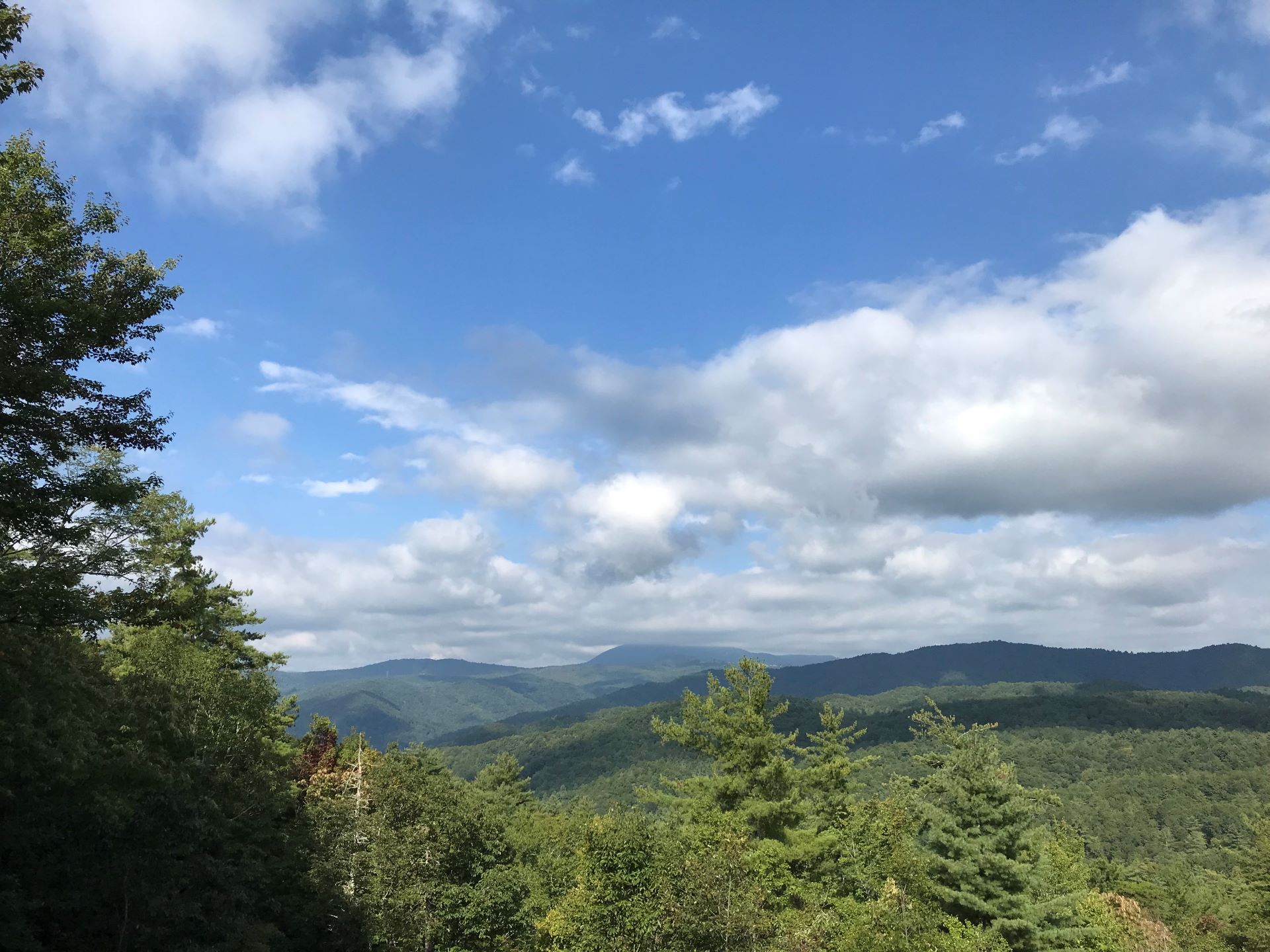Join my publication on Substack
If I had human neighbors close enough to hear me the other evening, they would have thought I was nuts.
I walked around both levels of my house commanding the orb weavers and their smaller kin to pack it up and leave the night before I began pressure washing the house. Some did.
Fall cleanup is intense
I’ve been spending hours outside in the golden days of autumn doing fall chores now that the weather is cooler. Weeding, limb collecting, pressure washing, noticing.
“I try to live in harmony,” said the woman in the hair salon in her slow Southern way. “But a spider built its web across my front door and I had to take the broom to it.”
Besides the orb weavers and their enormous architectural webs, I’ve been thinking about living in harmony with Nature a lot lately as I battle with deep-rooted invasive plants (with burrs!) in my moss garden. I’m now deeply regretting ignoring them during the heat and humidity of summer.
What does living in harmony with Nature really mean?
Is it, “Live and let live?”
Or is it, “Live and let die,” borrowed from the 1973 James Bond film?
It depends on who you ask.
A search for “living in harmony with nature” revealed wide-ranging definitions with one common theme:
- Sustainable: use it but don’t lose it
- Biological diversity: stem biodiversity loss and restore biodiversity health for the sake of humanity and the global ecosystem
- Science and policy: live peacefully alongside all other organisms even though we may need to exploit other organisms to some degree
- Economic research: science, rational thought, wise skepticism, and critical inquiry that enable us humans to live in ever-greater harmony with nature
- PETA: steps to make your house unappealing and a create a welcoming backyard habitat
- Religious: a central tenet in about a dozen religions
The common theme: Minimalizing and rationalizing human use, abuse and exploitation of Nature.
Is there a harmonious middle?
I struggle with swinging between the two extremes almost daily. For years I’ve been ethically OK with having a pest control service spray the exterior of the house. Bugs are fine, but outside.
Despite the chemical barrier, just this summer I found three Carolina scorpions (tiny – think bee sting), three tiny ringneck snakes caught in spider webs, spiders of all kinds, caterpillars, millipedes, grasshoppers, stinkbugs and other assorted insects in or on the house.
I practice catch and release with larger spiders but smaller bugs will likely be flattened, with an apology. I balance the selective killing with virtually no controls beyond the house, which may also add to the inbound migration problem.
I’m sure many readers are shuddering at those last two paragraphs.
Living in harmony means “viewing distance only” for most people
Our unconscious, disconnected definition of living in harmony means not having to deal with, be scared by or have our space invaded by Nature.
Coincidentally, tomorrow is the feast day of the St. Francis of Assisi, the Catholic patron saint of ecologists because of his intuitive connection with animals. Hundreds of worshippers bring a menagerie of pets for blessing to the Cathedral of St. John the Divine in New York City, a tradition practiced for more than a century in Italy.
Given that St. Francis and medieval ascetics didn’t believe in keeping pets as they could be a frivolous distraction, one wonders what he would think of this modern interpretation of his teachings.
I’m also wondering what he thinks about insecticides and chemical brushkillers. I may have to beg forgiveness and ask for dispensation.
Now, go wander outside!

P.S. Phone driving you crazy? Sign up for my free email course Phone-Jacked: 7 Days to Retake Control of Your Phone
3 Resources for You
Links to Amazon books are affiliate links.
Birds, worms, rabbits: Francis of Assisi was said to have loved them all – but today’s pet blessings on his feast day might have seemed strange to the 13th century saint The Conversation article mentioned above. Interesting historical perspective on early Christian concepts of living in harmony with Nature.
Holy Dogs and Asses: Animals in the Christian Tradition by Laura Hobgood-Oster | A feminist perspective of the symbolic and metaphoric treatment of animals to reveal animal agency.
Ways to Live in Harmony with Nature: Living Sustainably and Working with Passion by Kamaljit K Sangha | Steps to increase your awareness and reduce your footprint.
2 Questions for You
Reflections, questions and ideas to break the digital spell.
1st Q: What’s your definition of living in harmony with Nature?
2nd Q: How aligned is your lifestyle with that definition?
Hit reply and let me know what you discovered this week. I’ll use some of your feedback in next week’s newsletter (first name only.)
1 Action for You
One small step to start the change.
What’s one tiny action you could take this week to live in more harmony with Nature?
Hit reply, let me know how it goes and I’ll include feedback in next week’s newsletter.
Nature View
“The Earth is what we all have in common. ” – Wendell Berry
